About our Historic Sites
Delaware State Parks offer something for everyone, especially fans of history! With a long and storied past, Delaware is rich with history to discover – from an island fort used during three wars to one of the largest collections of steam powered automobiles. Other state park highlights include a fort on the dunes of the Atlantic Ocean, a Queen Anne period mansion and grounds, a park with no boundaries which tells the story of the birth of our nation, and a Life-Saving Station which rescued mariners over a hundred years ago. Many parks include living history where you can learn and engage with events and activities from the past. Learn more and visit today to make a historic adventure!
Auburn Valley State Park
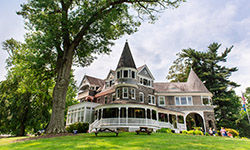
Nestled in the Piedmont’s Red Clay Valley, visitors to Auburn Valley State Park will discover the history of the Marshall Family, Yorklyn’s rich industrial history, and the revitalization of this site. Previously known as Auburn Heights Preserve, Auburn Valley State Park features the historic Marshall Mansion completed in 1897, the Marshall Steam Museum, the Auburn Valley 1/8-scale railroad, new hiking and paved bike trails and much more.
Bellevue State Park

Tucked in the middle of suburban Wilmington sits Bellevue State Park, a former DuPont estate. The home of William Dupont Jr. (1896-1965), Bellevue Hall, stands as the park’s centerpiece, alongside many other historic structures. William Dupont Jr., an avid equestrian, also transformed this land to include horse stables, indoor horse training facilities, and most notably a 1 ⅛ mile long horse track, all which can be viewed and enjoyed through various walking trails today.
First State Heritage Park
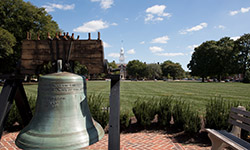
Delaware’s first urban park without boundaries, First State Heritage Park explores the stories of remarkable Delawareans and innovative governance in the First State. Interpreters clothed head-to-toe in Revolutionary garb await to lead visitors along the historic Dover Green through signature thematic walking tours, seasonal lantern-lit programs, craft workshops, and special events highlighting bygone eras.
Fort Delaware State Park
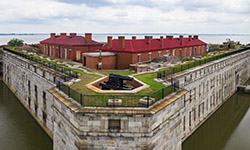
Situated on Pea Patch Island in the middle of the Delaware River, Fort Delaware was constructed in the mid-1800s to protect Wilmington and Philadelphia from enemy attack and continued to serve this role through WWI. The fort was among the most advanced in the nation when completed and even housed prisoners of war during the Civil War due to its water bound isolation. Today, costumed interpreters take you back to 1864 where you can tour the parade ground, explore the fort’s structure, hear stories of great escapes, and watch as the Fort's Columbiad cannon fires a live gunpowder charge!
Fort DuPont State Park

Fort DuPont was built to protect port cities along the Delaware River, like Wilmington and Philadelphia from enemy ships. When its weaponry became obsolete after World War I, Fort DuPont’s role switched primarily to training. The backbone of Fort DuPont’s coastal defense included its rifle, mortar and rapid-fire batteries that can still be seen today along the River View Trail.
Fort Miles Historical Area
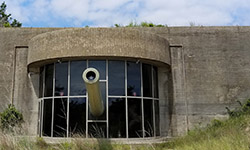
Lying amidst rolling sand dunes, on a high bank overlooking the Atlantic Ocean, is the Fort Miles Historical Area, home of the Fort Miles Museum. The central features of the museum include Battery 519, six barracks buildings, a fire control tower, an orientation building, and the Fort Miles Artillery Park. Today the historic site tells the story of Fort Miles, a key piece of our nation's coastal defense built within the massive sand dunes of Cape Henlopen, from World War II through the early 1970’s.
Indian River Life-Saving Station
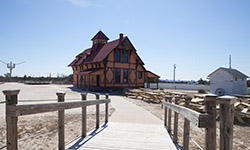
At the station you’ll be swept back to a time when night beach patrols and perilous high sea rescues were the only ways to save shipwreck victims along the coasts of the United States. Visitors can learn the astonishing histories of the region while exploring the original Indian River Life-Saving Station, built in 1876 for use by the United States Lifesaving Service to respond to the alarming number of shipwrecks along the coastlines of the United States.
Port Penn

Interpretive Center Temporarily Closed for Repairs
The Port Penn Interpretive Center, located in the village of Port Penn, was a schoolhouse from 1886 to 1961 and now serves as a museum featuring material culture from late 19th and early 20th century Port Penn. The center’s displays, programs and self-guided walking tours around town showcase the folklife and fascinating histories of the wetland communities along the shores of the Delaware River.
